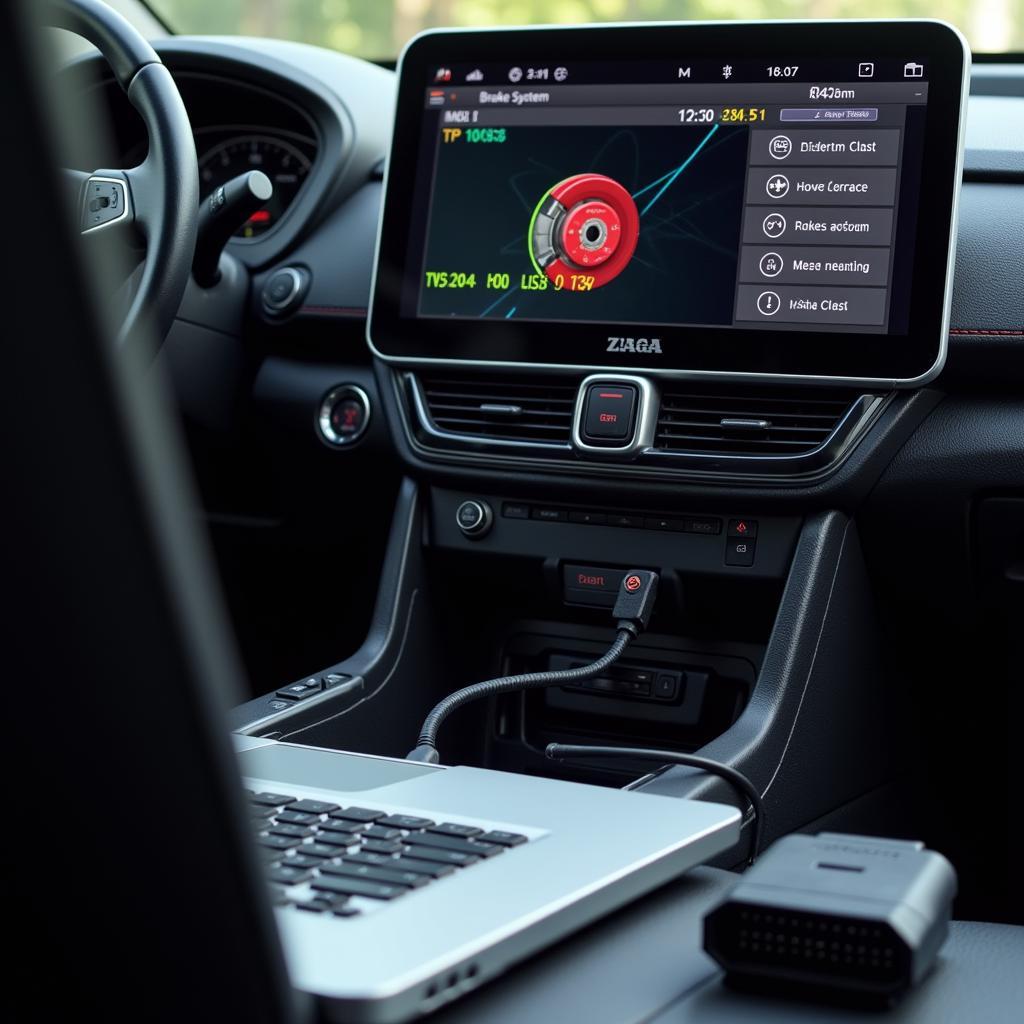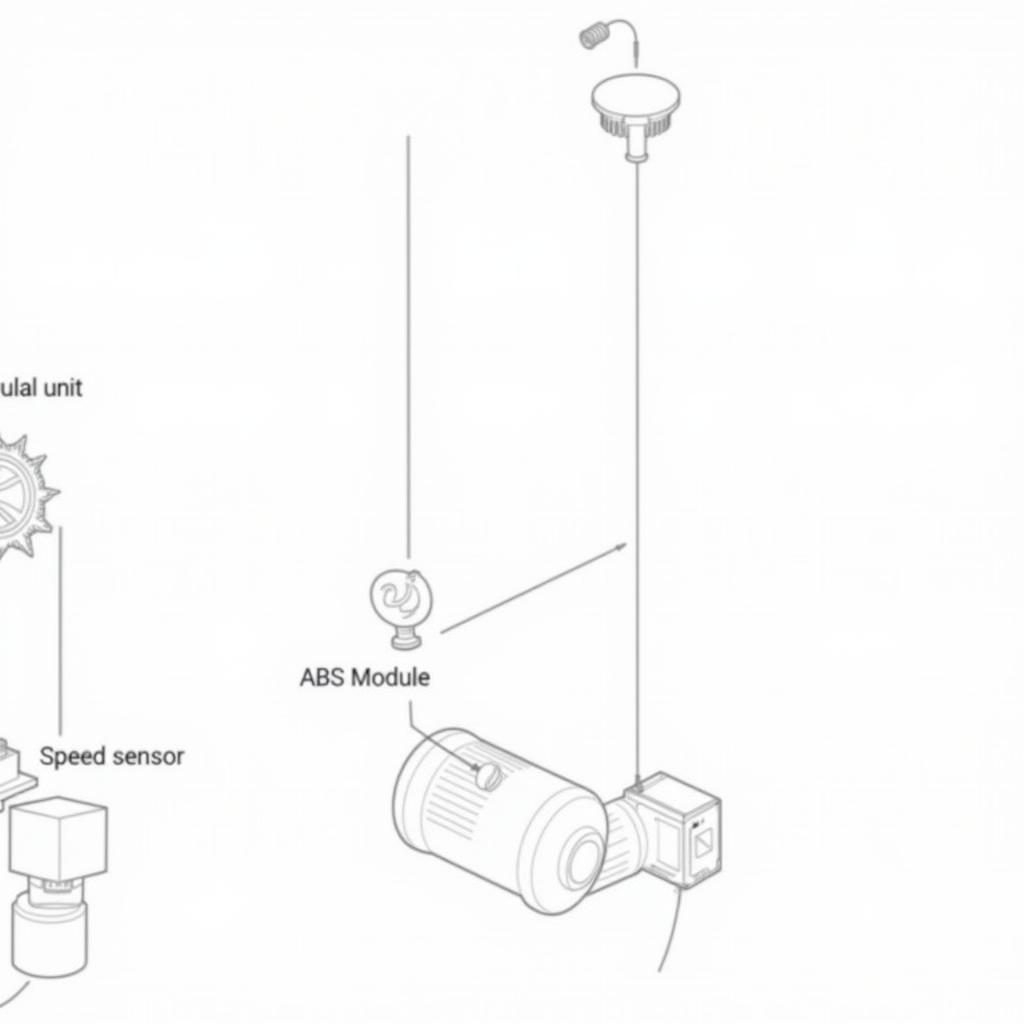The brake system warning light on your Honda is a crucial safety indicator. Ignoring it could lead to serious problems. This comprehensive guide will walk you through understanding what triggers the brake system warning light in your Honda, how to diagnose the issue, and what solutions might be available.
Understanding Your Honda’s Brake Warning Light
The brake warning light can illuminate for several reasons. It doesn’t always mean your brakes are about to fail, but it always warrants investigation. The light could signal low brake fluid, a problem with the anti-lock braking system (ABS), or even a faulty parking brake. Knowing the potential causes is the first step to a solution.
Common Reasons for a Brake Warning Light
Several common culprits trigger the brake system warning light in Hondas. These include:
- Low Brake Fluid: This is the most common reason. A leak in the brake lines, worn brake pads, or a failing master cylinder can deplete your brake fluid.
- Parking Brake Engaged: Sometimes, the simplest explanation is the correct one. Make sure your parking brake is fully disengaged.
- ABS Issue: A malfunctioning ABS system can trigger the warning light. This could be due to a faulty sensor, pump, or control module.
- Brake Pad Wear: Many Hondas have sensors that trigger the warning light when the brake pads are worn down and need replacing.
- Faulty Brake Light Switch: A malfunctioning brake light switch can sometimes cause the brake warning light to come on.
Diagnosing the Problem
Before you rush to a mechanic, there are a few simple checks you can perform yourself. First, check your parking brake. If it’s engaged, release it. Next, check your brake fluid level. Locate the brake fluid reservoir under the hood (consult your owner’s manual if needed) and ensure the fluid level is between the minimum and maximum marks. If the fluid is low, adding more might temporarily solve the problem, but you should still have a mechanic check for leaks. If the fluid level is fine and the parking brake is disengaged, it’s likely a more complex issue requiring professional diagnostics.
Advanced Diagnostic Techniques and Remote Solutions
Modern vehicles, including Hondas, rely heavily on sophisticated electronic systems. Diagnosing brake system issues often requires specialized equipment and software. Remote diagnostics and programming are becoming increasingly important in this field.
Remote Diagnostics and Programming
Imagine having a specialist diagnose your car’s brake system issue from miles away. Remote diagnostics makes this a reality. Using specialized software, technicians can access your car’s computer system, read error codes, and even perform some programming tasks remotely. This can save you time and money by avoiding unnecessary trips to the mechanic.
 Remote Diagnostics for Honda Brake System
Remote Diagnostics for Honda Brake System
“Remote diagnostics are a game-changer,” says John Miller, Senior Automotive Diagnostics Engineer at AutoTech Solutions. “They allow us to quickly identify and often resolve issues without the customer needing to bring their car in.”
ABS System Troubleshooting
If the issue is with the ABS, specialized diagnostic tools can pinpoint the faulty component, whether it’s a wheel speed sensor, the ABS module, or something else. This targeted approach eliminates guesswork and ensures efficient repairs.
“Accurate diagnosis is key when it comes to ABS systems,” adds Maria Sanchez, Lead Technician at Precision Auto Repair. “Remote diagnostics help us pinpoint the problem quickly and accurately.”
 Honda ABS System Components
Honda ABS System Components
What to Do When Your Brake Light Comes On
If your Honda’s brake warning light illuminates, follow these steps:
- Check the parking brake: Make sure it’s fully disengaged.
- Check the brake fluid level: If it’s low, add more, but have a mechanic check for leaks.
- If the light persists: Don’t delay. Seek professional help immediately. Driving with a persistent brake warning light can be dangerous.
- Consider remote diagnostics: This can save you time and money by allowing a specialist to diagnose the problem remotely.
Conclusion
The brake system warning light in your Honda is a critical safety feature. Understanding what it means and taking appropriate action can prevent serious problems. While some checks can be performed at home, complex issues often require professional diagnostics and potentially remote solutions. Ignoring the warning light could compromise your safety and lead to costly repairs. Don’t delay – address the issue promptly to keep your Honda running safely and smoothly.
FAQ
- Can I drive my Honda if the brake warning light is on? It’s not recommended. While you might be able to drive short distances, it’s crucial to have the issue diagnosed and repaired as soon as possible.
- How much does it cost to fix a brake system problem? The cost varies depending on the issue. A simple brake fluid top-up might be inexpensive, while replacing major components like the master cylinder or ABS module can be more costly.
- What is the difference between the brake warning light and the ABS light? While both relate to the braking system, they indicate different issues. The brake warning light usually signals low brake fluid or a problem with the traditional braking system, while the ABS light specifically indicates a problem with the anti-lock braking system.
- How often should I check my brake fluid? It’s a good idea to check your brake fluid level at least once a month, or as recommended in your Honda’s owner’s manual.
- Can I add any type of brake fluid to my Honda? No, use only the type of brake fluid recommended in your owner’s manual. Using the wrong type can damage your brake system.
- What is remote programming? Remote programming allows technicians to update or modify your car’s software remotely, often to fix bugs or improve performance. This can sometimes be applied to brake system components.
- How can I find a reputable mechanic specializing in Honda brake systems? Ask for recommendations from friends, family, or online forums. Look for mechanics certified by Honda or with extensive experience working on Honda vehicles.
